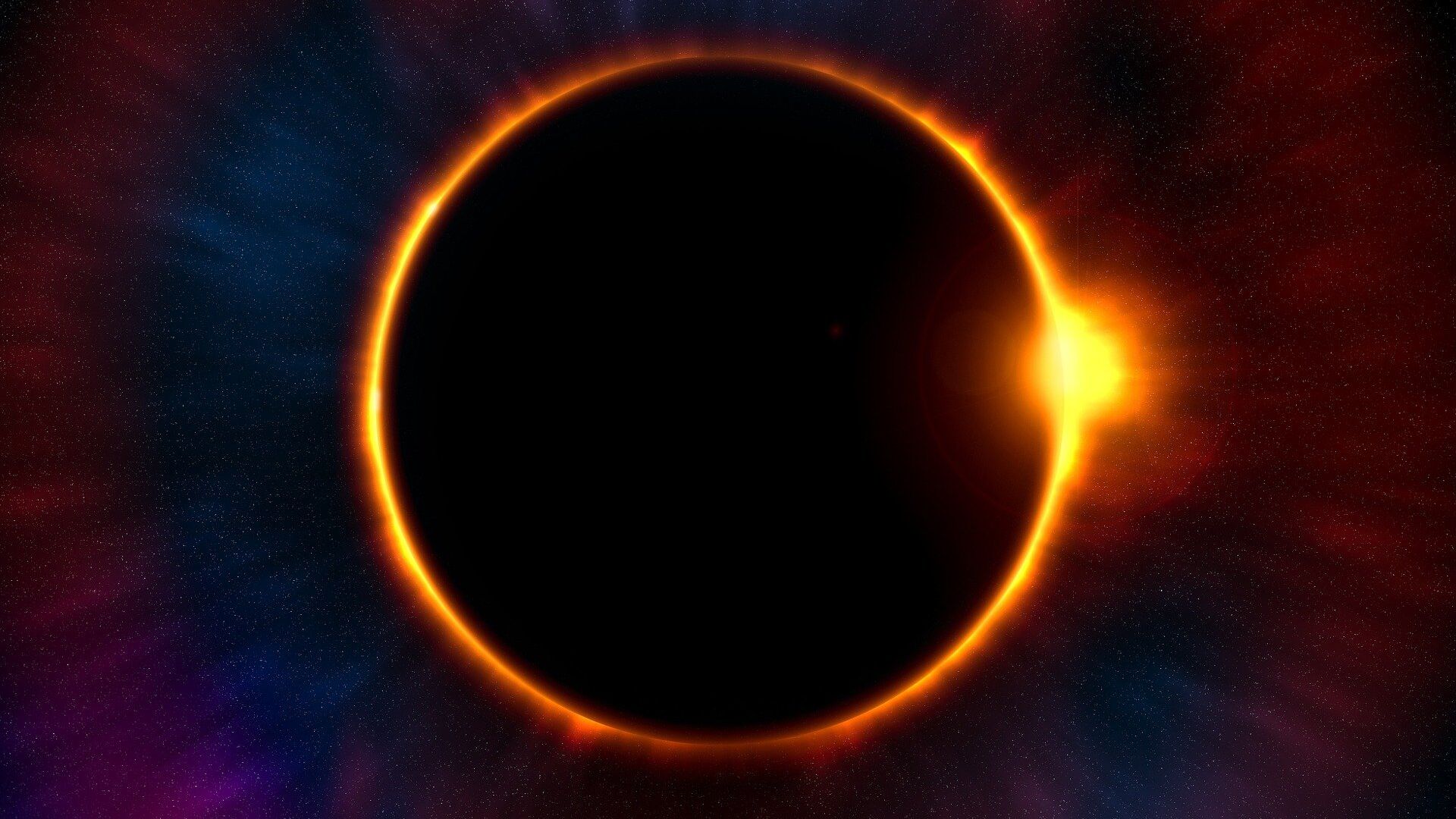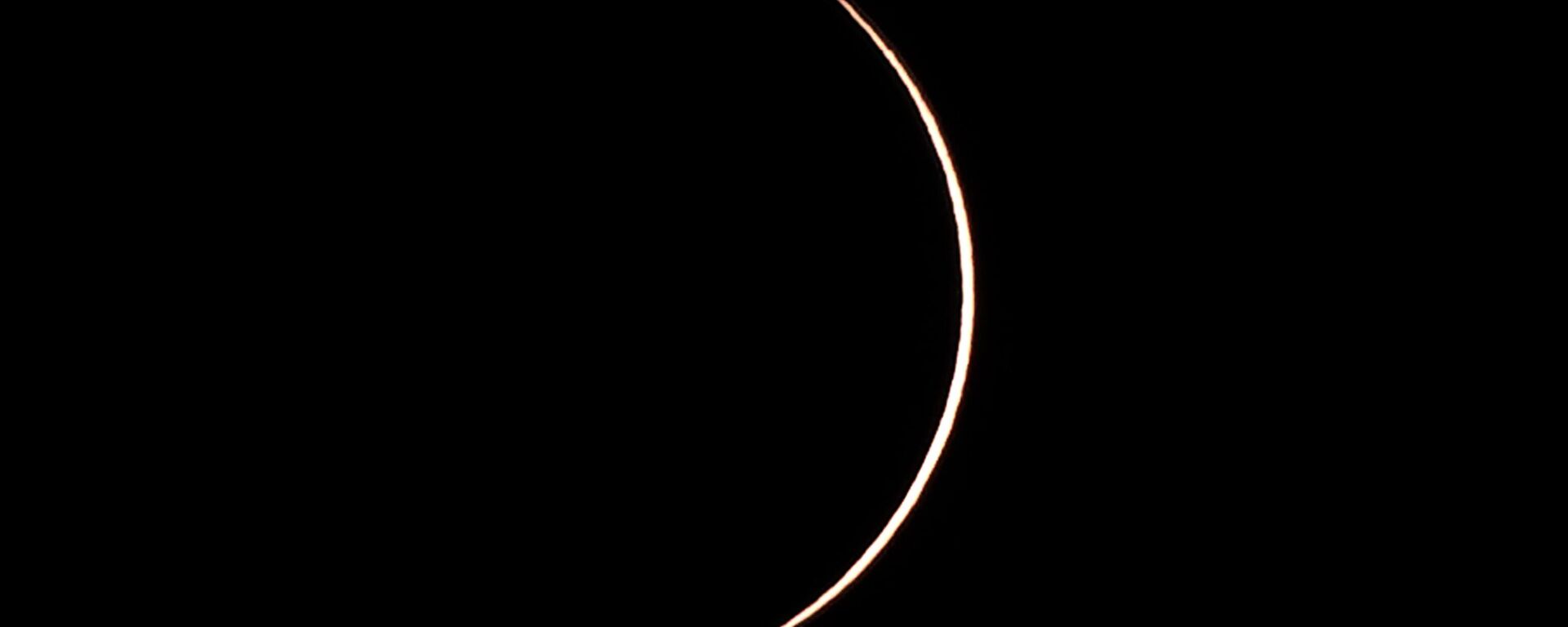https://sputnikglobe.com/20230926/researchers-expect-breathtaking-discoveries-from-solar-eclipse---nasa-scientist-1113705743.html
Researchers Expect ‘Breathtaking’ Discoveries From Solar Eclipse - NASA Scientist
Researchers Expect ‘Breathtaking’ Discoveries From Solar Eclipse - NASA Scientist
Sputnik International
The coming total solar eclipse next week will offer a "breathtaking" opportunity to probe the mysteries of the interior of our star and the impact solar radiation has on Earth’s atmosphere, a NASA scientist has said.
2023-09-26T23:30+0000
2023-09-26T23:30+0000
2023-09-26T23:27+0000
beyond politics
science & tech
earth
nasa
oregon
texas
solar eclipse
space
https://cdn1.img.sputnikglobe.com/img/105866/72/1058667246_0:95:1920:1175_1920x0_80_0_0_cfdb472c13c4633f3f7a19e7db1b7ed4.jpg
"[The eclipse is an opportunity] absolutely breathtaking for science," Guhathakurta told a media teleconference on Tuesday. The observations are going to be made by Earth-based observatories, high flying balloons and rockets launched into the stratosphere that are "absolutely unobtainable from any other sources or platforms," Guhathakurta said. The "ring of fire" eclipse on October 14 will be visible only in the narrow path of annularity that stretches from the state of Oregon to Texas, as well as parts of Mexico, Central America and South America, Guhathakurta said. Rockets fired into space will carry instruments to measure the electric and magnetic fields of the Earth's particle distribution during the eclipse, Guhathakurta added. Outside the path of annularity of the full eclipse, people across the contiguous United States, Puerto Rico, and parts of Alaska and Hawaii will still have the chance to see a partial solar eclipse, when the Moon covers part of the Sun without creating the "ring of fire" effect, according to NASA.
https://sputnikglobe.com/20230420/skywatchers-get-rare-glimpse-of-once-in-a-decade-hybrid-solar-eclipse-1109685952.html
earth
oregon
texas
Sputnik International
feedback@sputniknews.com
+74956456601
MIA „Rossiya Segodnya“
2023
Sputnik International
feedback@sputniknews.com
+74956456601
MIA „Rossiya Segodnya“
News
en_EN
Sputnik International
feedback@sputniknews.com
+74956456601
MIA „Rossiya Segodnya“
Sputnik International
feedback@sputniknews.com
+74956456601
MIA „Rossiya Segodnya“
nasa heliophysics program scientist madhulika guhathakurta, total solar eclipse, solar radiation, effects of solar radiation on earth's atmosphere
nasa heliophysics program scientist madhulika guhathakurta, total solar eclipse, solar radiation, effects of solar radiation on earth's atmosphere
Researchers Expect ‘Breathtaking’ Discoveries From Solar Eclipse - NASA Scientist
WASHINGTON (Sputnik) - The coming total solar eclipse next week covering parts of the western United States will offer a "breathtaking" opportunity to probe the continuing mysteries of the interior of our star and the impact solar radiation has on Earth’s atmosphere, NASA heliophysics program scientist Madhulika Guhathakurta said.
"[The eclipse is an opportunity] absolutely breathtaking for science," Guhathakurta told a media teleconference on Tuesday.
The observations are going to be made by Earth-based observatories, high flying balloons and rockets launched into the stratosphere that are "absolutely unobtainable from any other sources or platforms," Guhathakurta said.
The "ring of fire" eclipse on October 14 will be visible only in the narrow path of annularity that stretches from the state of Oregon to Texas, as well as parts of Mexico, Central America and South America, Guhathakurta said.
Rockets fired into space will carry instruments to measure the electric and magnetic fields of the Earth's particle distribution during the eclipse, Guhathakurta added.
Outside the path of annularity of the full eclipse, people across the contiguous United States, Puerto Rico, and parts of Alaska and Hawaii will still have the chance to see a partial solar eclipse, when the Moon covers part of the Sun without creating the "ring of fire" effect, according to NASA.



